Three
TRAFFIC AND CROWDS

ARMISTICE DAY, 1919. On November 11, 1919, New Yorkers celebrated the first anniversary of the historic armistice that ended World War I. This picture was taken at West 134th Street and Lenox Avenue in Harlem. The war’s end was quickly followed by the Roaring Twenties, a period of booming prosperity, Prohibition, and an outburst of creative activity in the arts, sciences, and technology. Only a few weeks after this picture was taken, the wine merchant on the right would no longer be able to conduct his trade due to National Prohibition.

UNION SQUARE TRAFFIC. This picture of Union Square was taken around the year 1918. The square’s famous statues, Henry Kirke Brown’s George Washington on Horseback (1856) and Frédéric-Auguste Bartholdi’s Marquis de Lafayette (1876), can be seen in the distance.

FIFTH AVENUE CROWD. This scene at Fifth Avenue and 42nd Street dates from 1918. Aside from the numerous office buildings, this area was noted for its smart shops and other mercantile establishments.

WALKING BY THE NEW YORK PUBLIC LIBRARY. Crowds gather at Fifth Avenue and 42nd Street in 1918. Not appearing in this picture is the building the pedestrians were passing by—the New York Public Library, which was to the left side of the lawn.
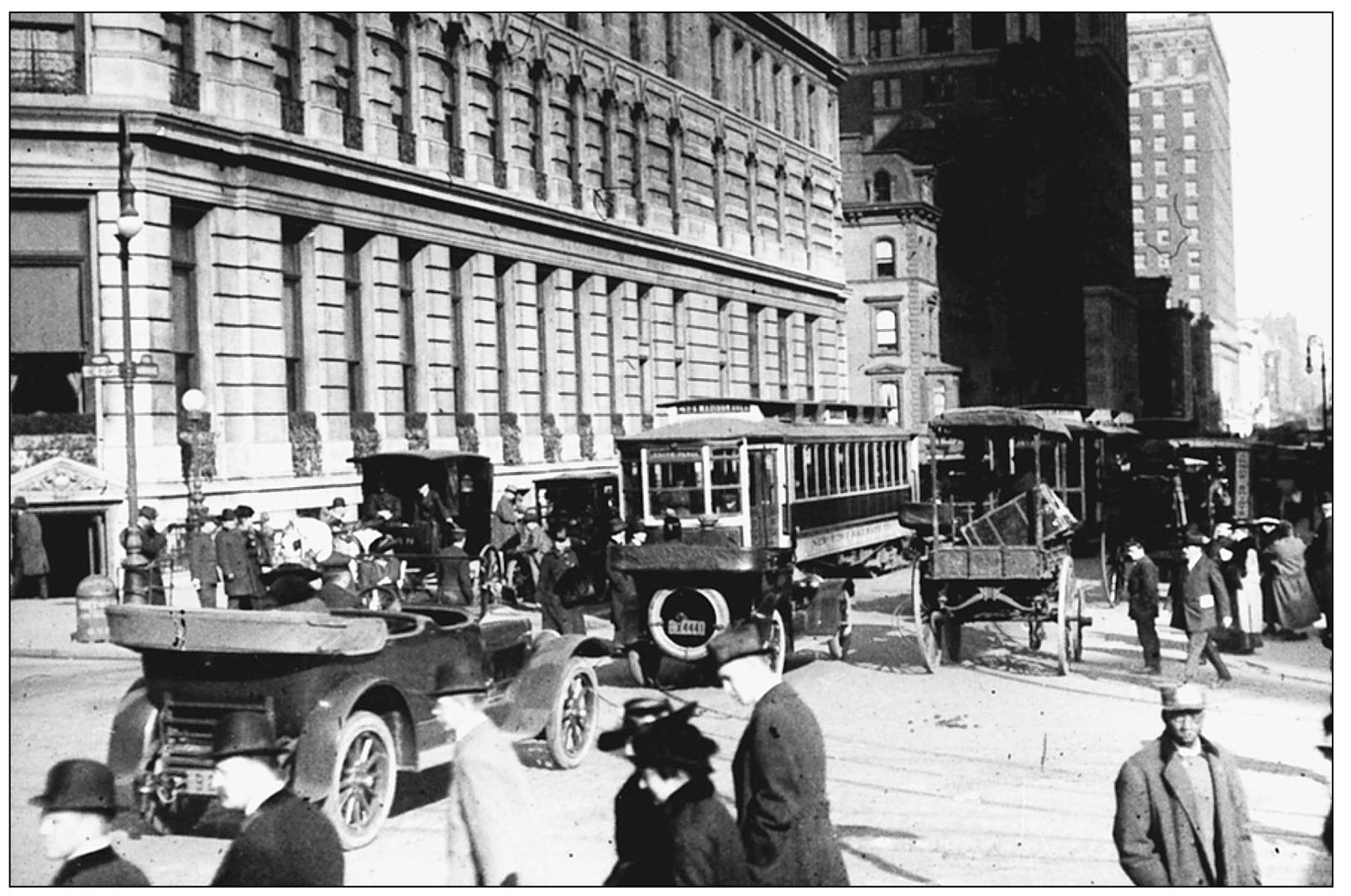
FORTY-SECOND STREET AND MADISON AVENUE. At the left is a portion of the elegant Hotel Manhattan. This picture is from about 1920.
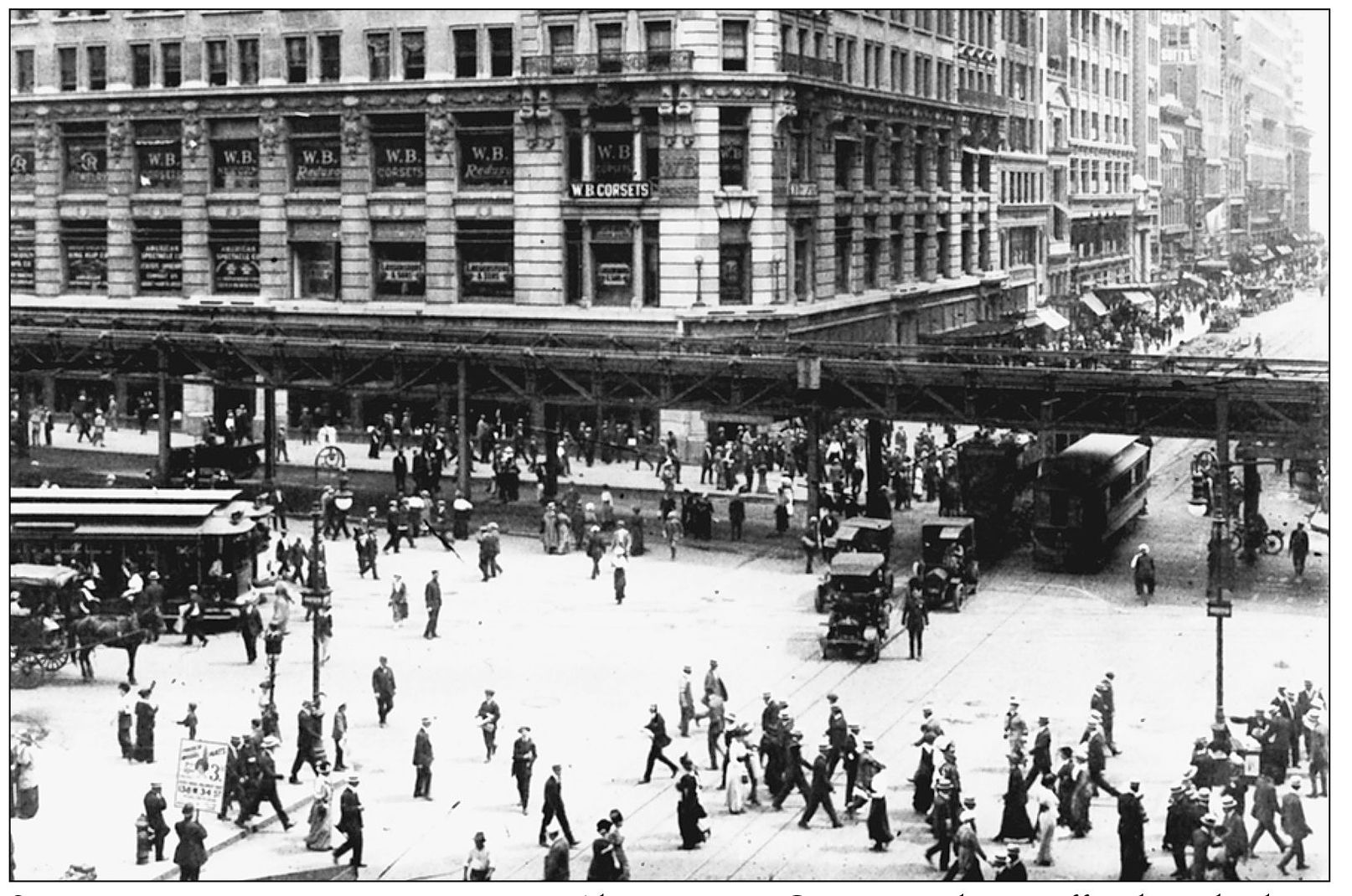
SHOPPING AND BUSINESS DISTRICTS. Above, W. B. Corsets are being offered in the large building opposite the elevated railway. Below is a similar business district scene.

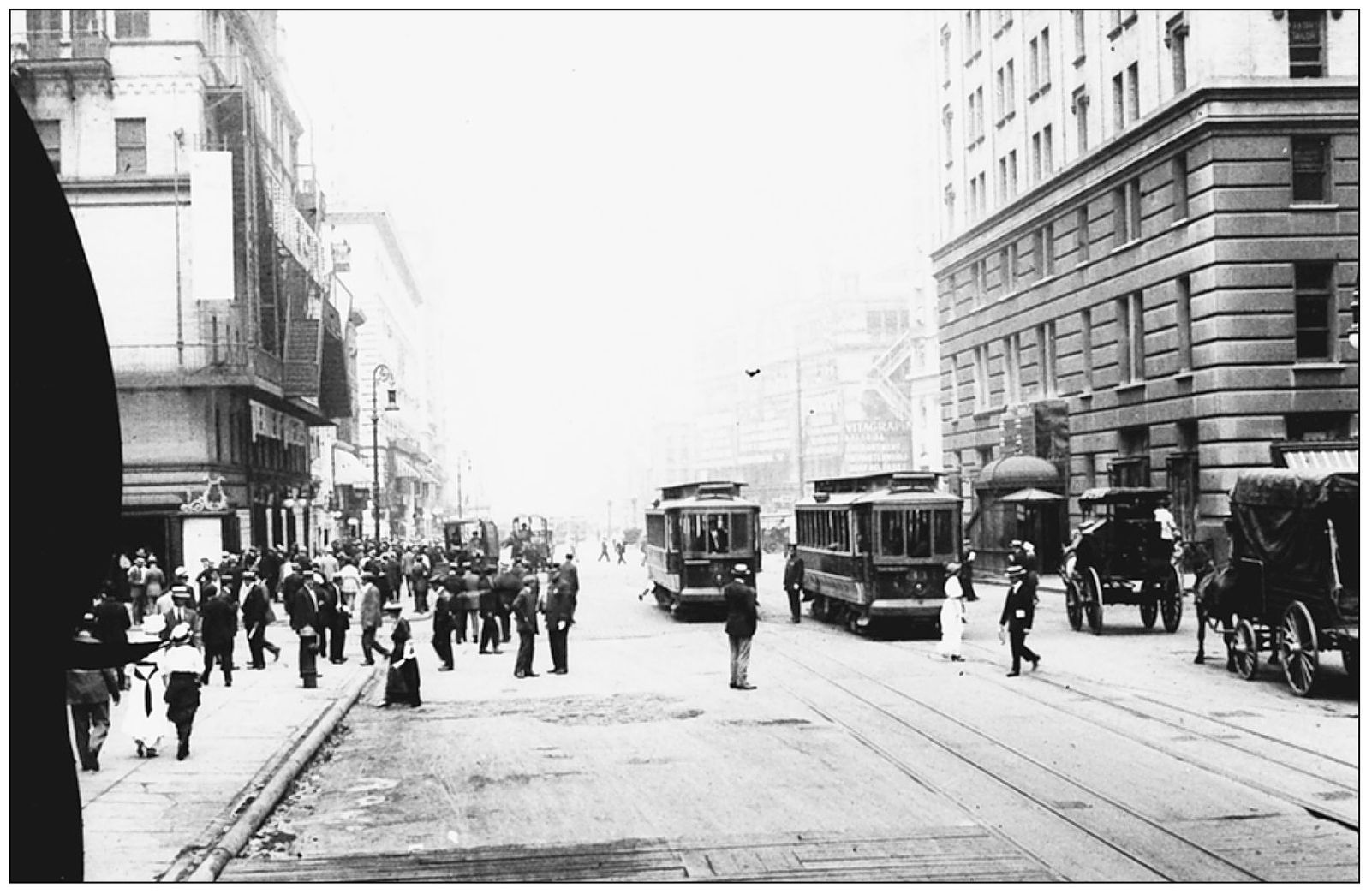
ALONG THE TROLLEY LINES. This image dates from the years immediately prior to World War I. Around this time, the price of a trolley ride was 5¢.

MOUNTED TRAFFIC POLICEMAN. The mounted officer is on duty at the intersection of Fifth Avenue and 42nd Street. Not surprisingly, mounted police have been a part of police work for well over two centuries.

TRAFFIC POLICE. Two traffic policemen appear in this scene from Fifth Avenue and 42nd Street. The shops across the street are advertising the products of A. Schulte, while the billboard above urges people to buy Apollinaris mineral water.

REPORTERS’ OFFICE. Although taken indoors at their office at 301 Mulberry Street, these men spent much of their time looking for stories in the streets of Manhattan. The picture dates from around the 1890s and was taken by Jacob Riis.
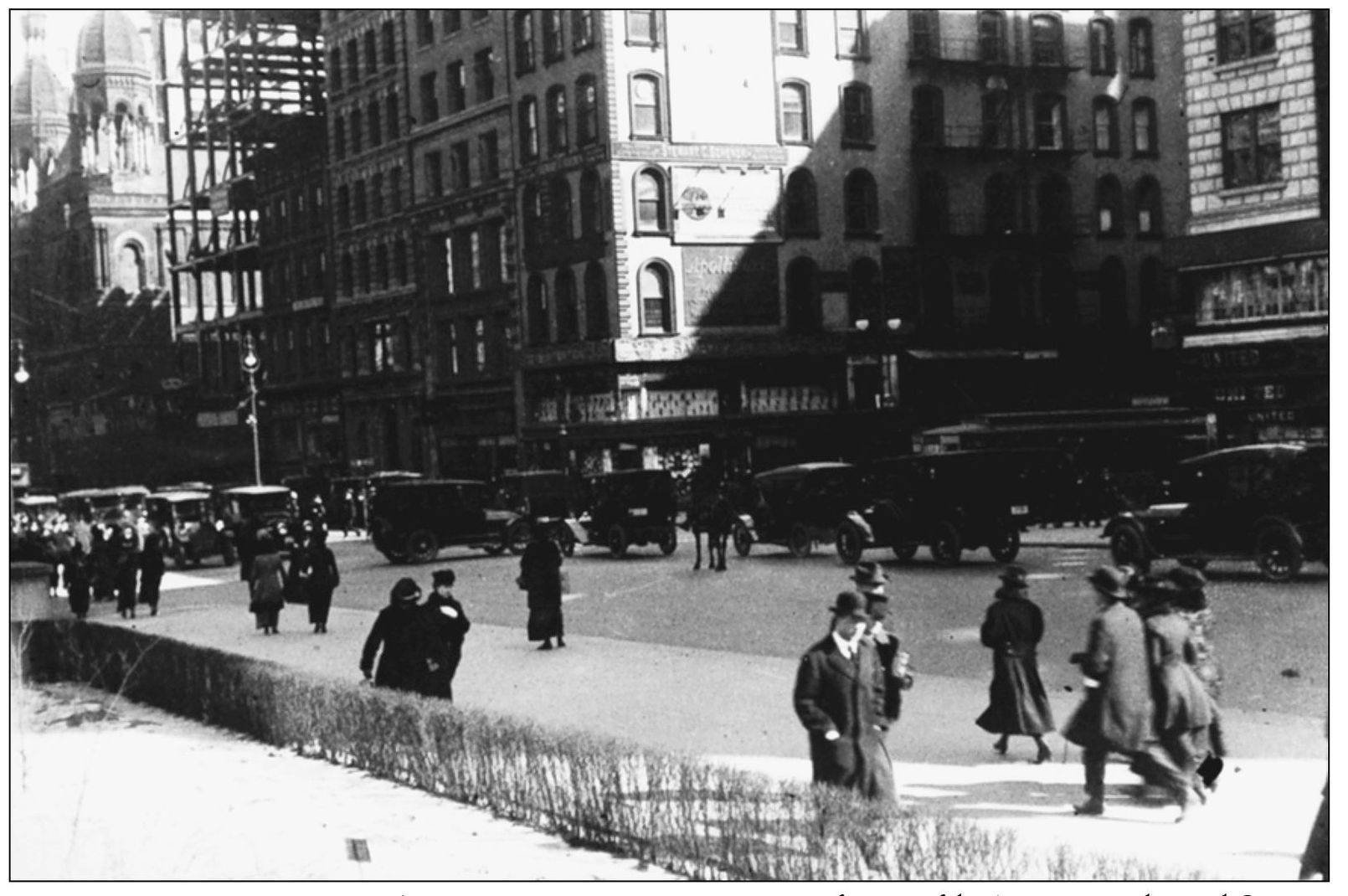
TWO VIEWS ALONG FIFTH AVENUE. Here are more scenes from Fifth Avenue and 42nd Street, but at different times of the year.


HOTEL MANHATTAN. Standing at the corner of Madison Avenue and 42nd Street, the Hotel Manhattan was a well-known stopping place for visitors. At the front entrance, three cabs wait to be summoned. The hotel was designed by Henry J. Hardenbergh and built in 1896–1897. It was within walking distance of Grand Central Terminal. In 1921, the hotel was remodeled for offices. It was demolished in the 1950s.
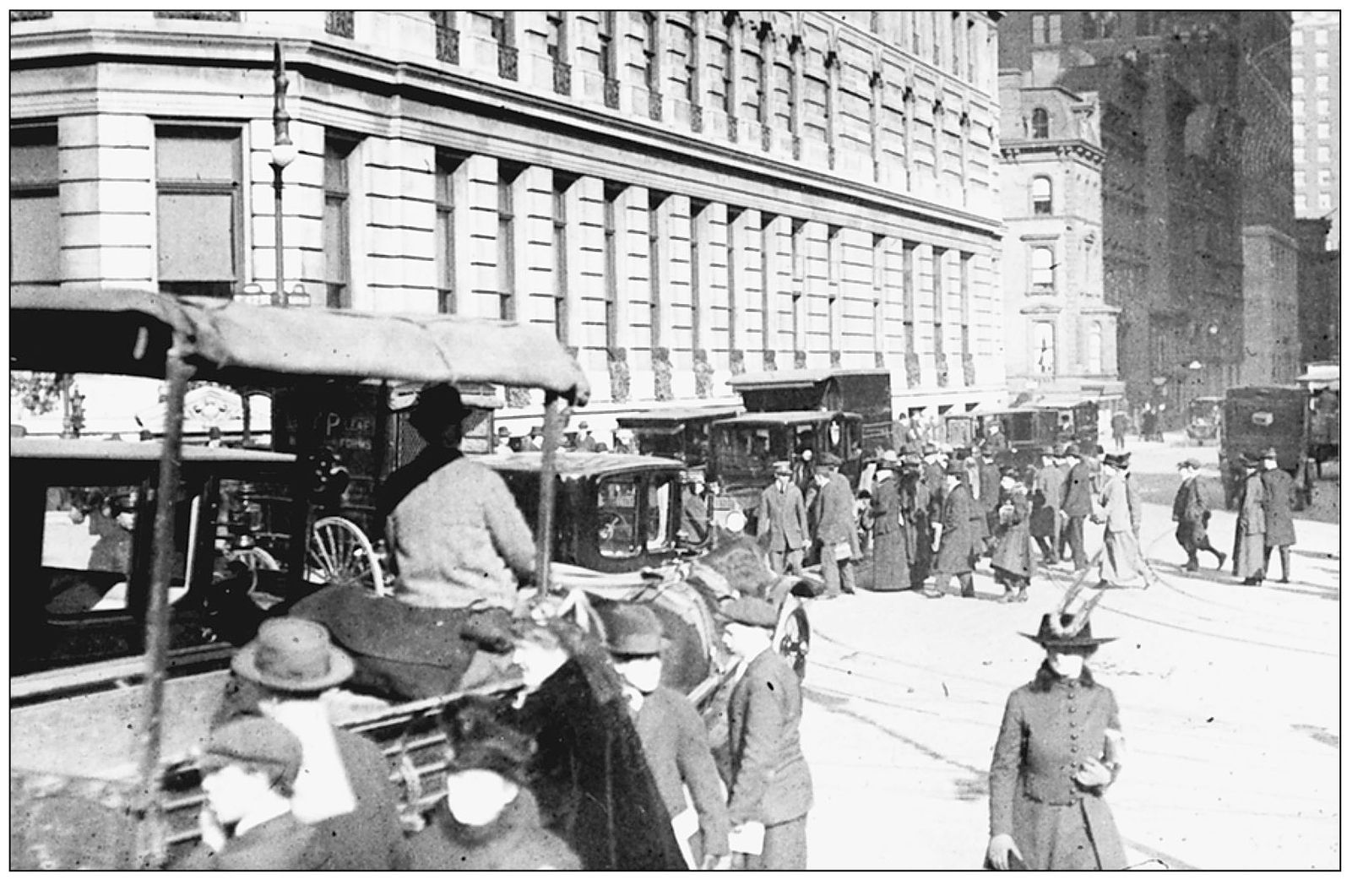

TIMES SQUARE, 1918. At the left stands the luxurious Hotel Astor. Various popular theaters are on the right, including the Vitagraph Theatre, the New York Theatre, and B. F. Keith’s Palace Theatre. The legendary Palace Theatre was the place where the highest-paid vaudeville acts performed, such as the cyclonic Eva Tanguay (the “I Don’t Care Girl”), comic juggler W. C. Fields, magician Harry Houdini, A. Robins (the musical clown), singers Nora Bayes (famous for “Shine on Harvest Moon”), Blanche Ring, Harry Richman, Arthur Tracy (with his accordion), and Van and Schenck, crooners Nick Lucas and Russ Columbo, witty monologist Frank Fay, dancers Eddie Foy, Ann Pennington, Pat Rooney, Joe Frisco, Fred Astaire, Clifton Webb, Mae Murray, Bill “Bojangles” Robinson, James Cagney, George Raft, and Charlotte Greenwood, female impersonators Bert Savoy and Julian Eltinge, as well as a crowd of comedians: Weber and Fields, Gallagher and Shean, Bert Williams, Eddie Cantor, Jimmy Savo, Jack Benny, Jimmy Durante, Clark and McCullough, Fred Allen, George Jessel, Smith and Dale, the Marx Brothers, Burns and Allen, Milton Berle, and Ted Healy and his (Three) Stooges.

TIMES SQUARE CLOSE-UP. This closer view of the square in 1918 shows the advertisement for Fatima Turkish cigarettes, as well as the Strand Theatre to the left, a portion of the Palace Theatre to the right, and the showroom for purchasing Columbia phonographs and records.

TRAFFIC LIGHTS. Taken at Fifth Avenue and 42nd Street around the year 1920, this shows one of Manhattan’s earliest traffic lights. Note the very old Ford on the left.
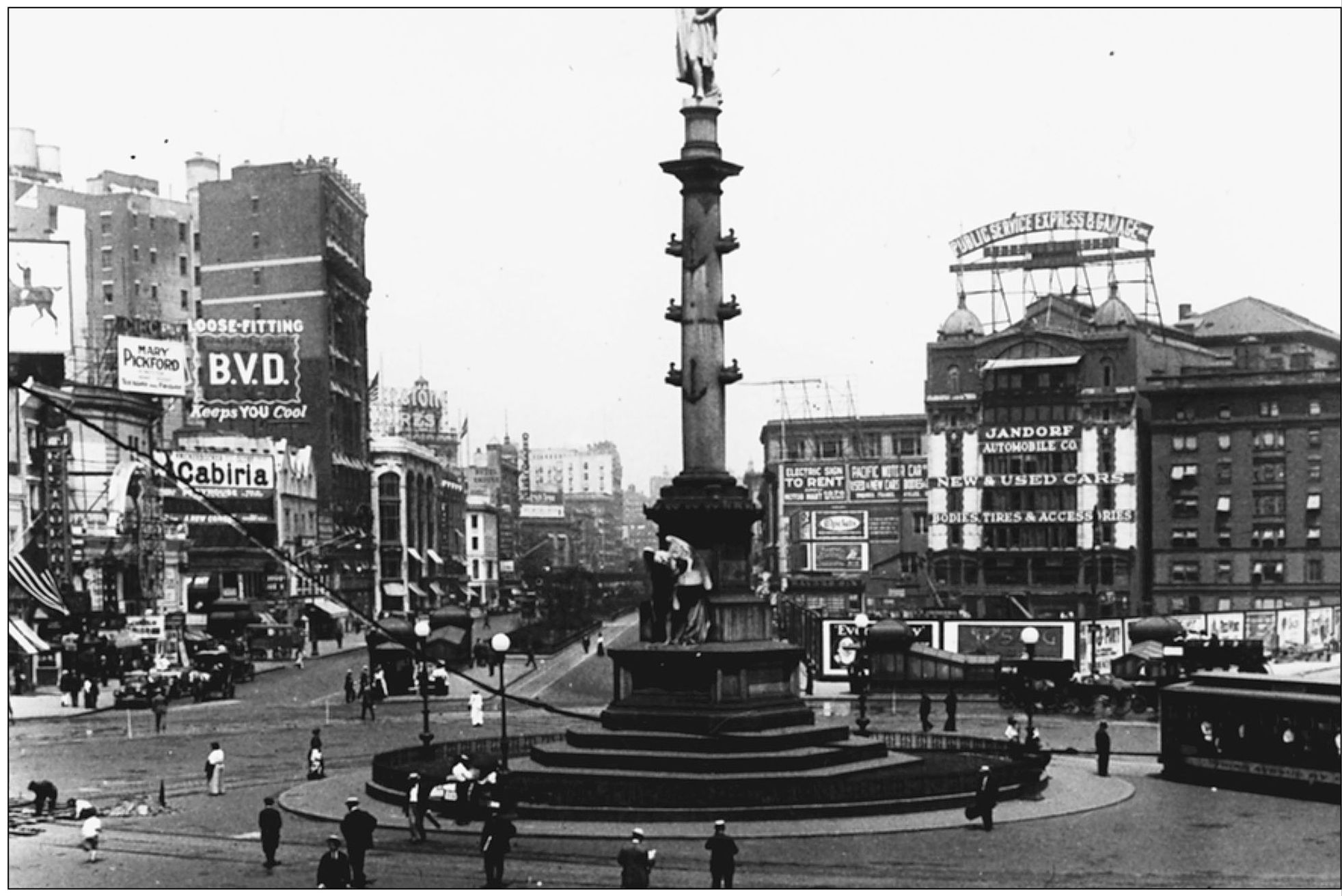
COLUMBUS CIRCLE. This was how Columbus Circle looked in the early 1920s. At the left, movie star Mary Pickford’s latest film is being advertised in a huge white billboard at the Circle Theatre. Named in honor of the Italian explorer Christopher Columbus, who discovered the New World for the king and queen of Spain, Columbus Circle is a major commercial and entertainment district in Manhattan. It is also the location of several cultural and educational institutions.
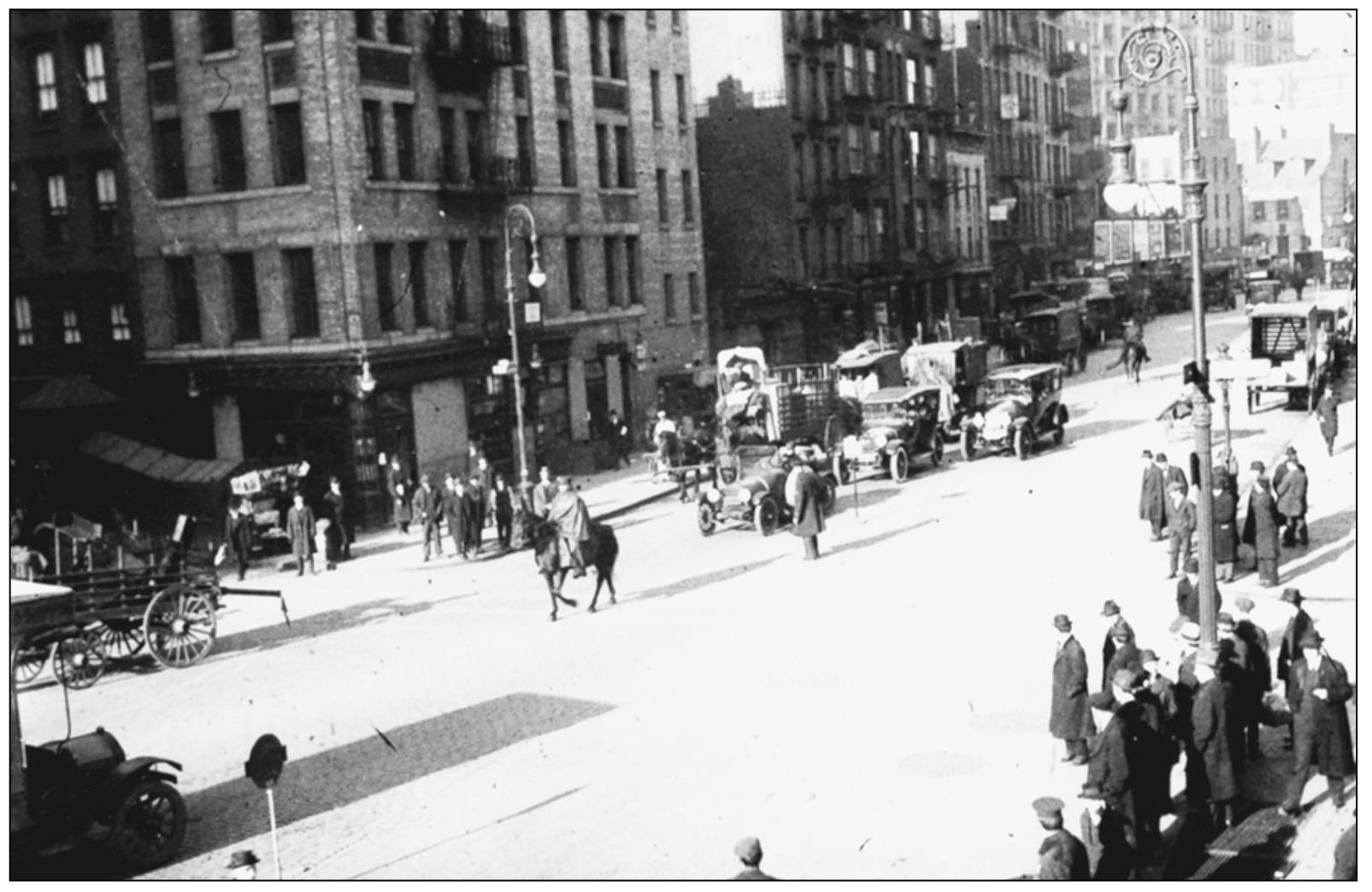
BUSY STREETS. This picture shows pedestrians waiting to cross the street. Note the lone horseman, lower left.
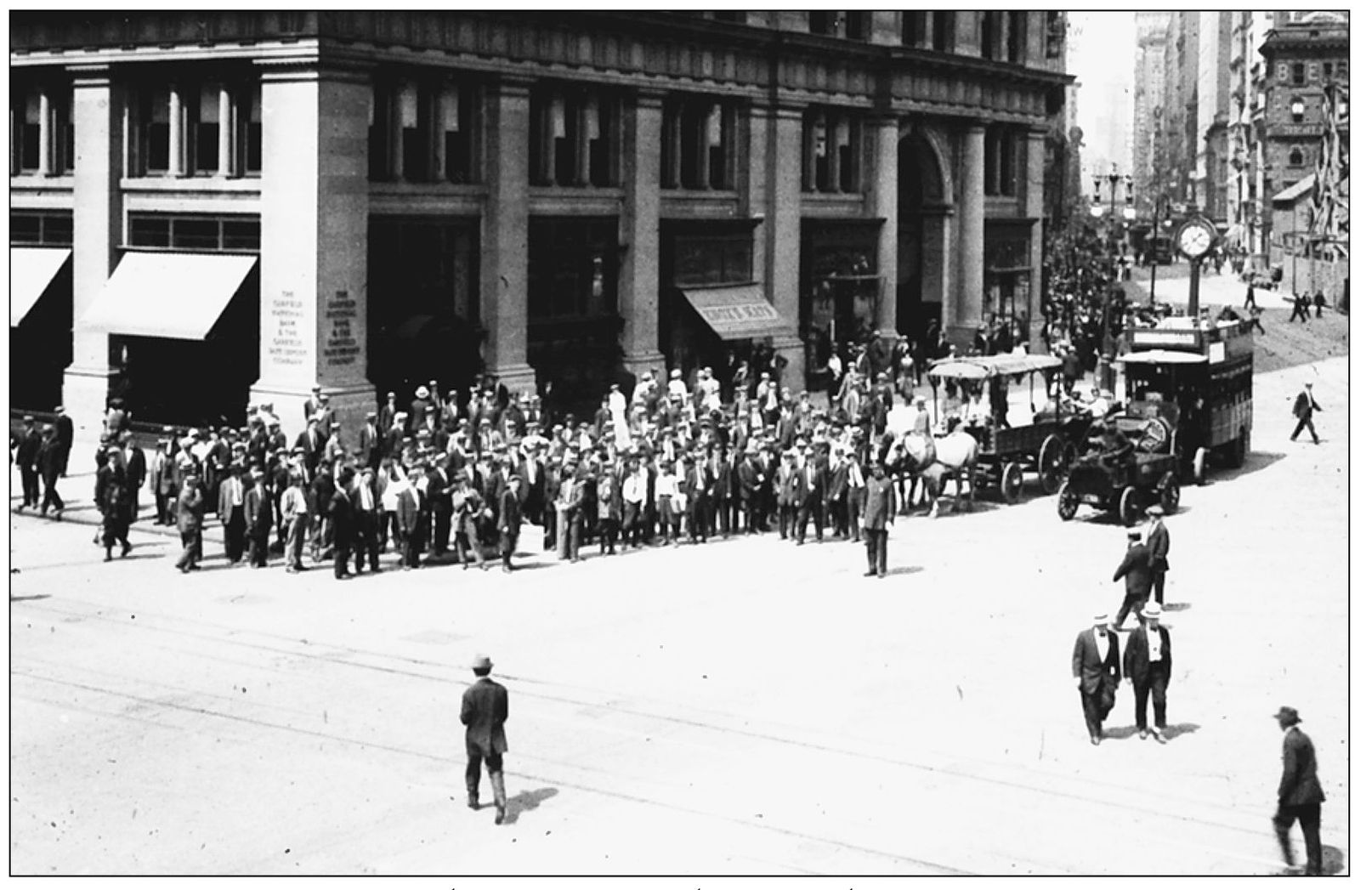
MADISON SQUARE TRAFFIC. This picture was taken at Madison Square.

TROLLEYS. Trolleys trundle down a Manhattan street. Note the advertisement for Ever-Ready batteries on the left.

TRAFFIC AT 23RD STREET. This is a photograph of 23rd Street, which has always been a major thoroughfare. Theaters, shops, and offices are common destinations in the area. The YMCA and the Leo House for German Catholic immigrants have had a presence there for decades.

HORSE TRAFFIC AROUND 1900. In front of this building, probably an apartment house or a hotel, a horse carriage and horse-drawn wagons pass by.

EHRET’S GROCERY AND DELICATESSEN. Although George Ehret (1835–1927) sold a wide range of items such as groceries and tobacco, he was really more famous for his brewery. Ehret came to America from Germany in 1857 and, with his father, operated the Hell’s Gate Brewery. Following his death in 1927, his family sold out to another German, Col. Jacob Ruppert. At his death, Ehret left a $40 million estate.
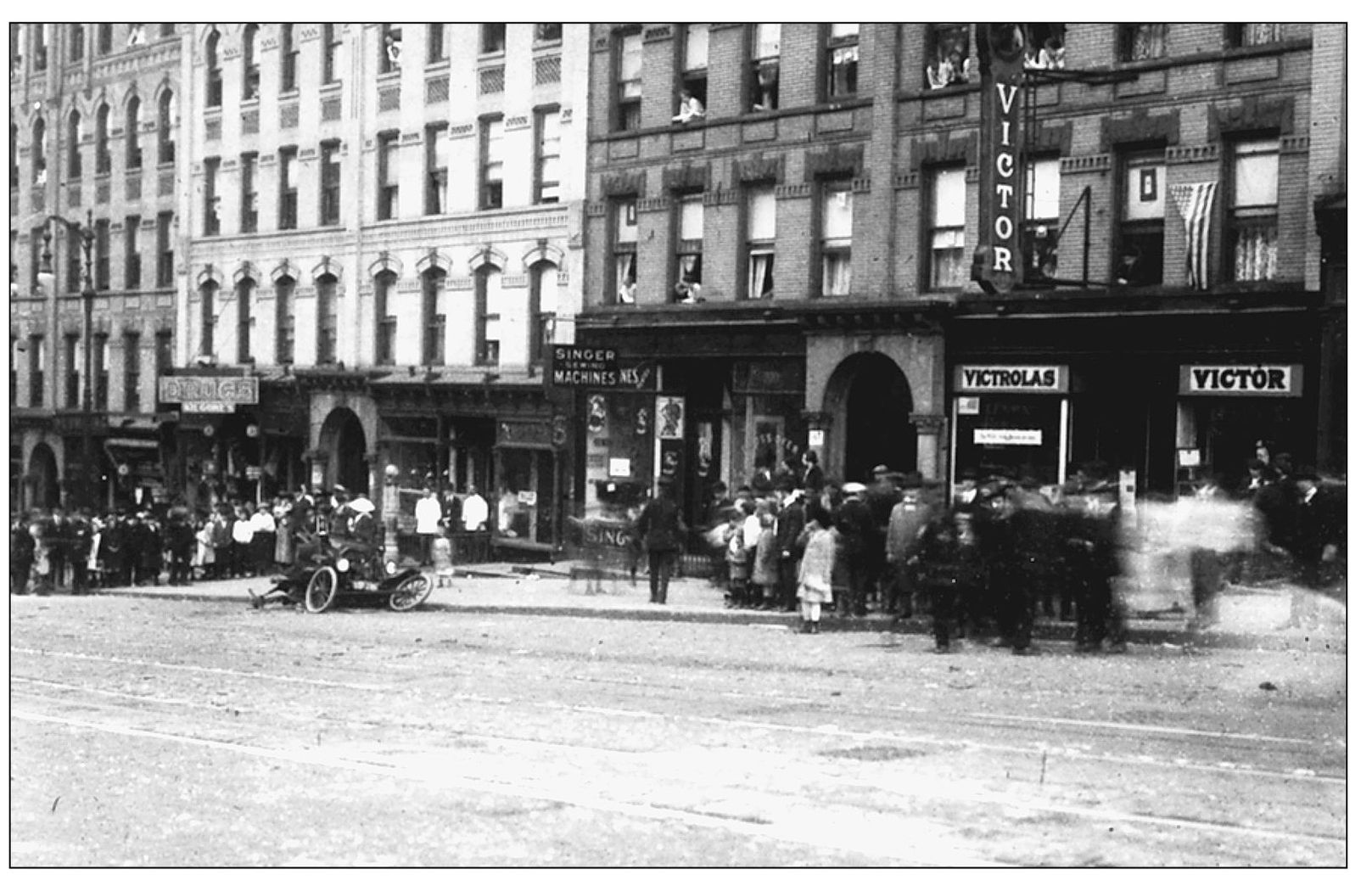
VICTOR TALKING MACHINES. An accident occurred in front of this merchandiser of America’s most popular phonograph machine, the Victrola. Victrolas played the records of some of the Victor Talking Machine Company’s greatest stars, including Enrico Caruso, the Paul Whiteman Orchestra, and Al Jolson. Aside from small shops like the one pictured here in 1918, Victrolas were also sold at grand department stores like R. H. Macy’s and Gimbel’s.

AN ELEMENTARY SCHOOL IN HARLEM. This picture of children and their parents at the end of the school day was taken in 1927.

DELANCEY STREET AND THE WILLIAMSBURG BRIDGE. This photograph of the Lower East Side was taken around 1920. The Williamsburg Bridge, shown on the upper right, is a steel suspension bridge that spans the East River. It was constructed in 1902.